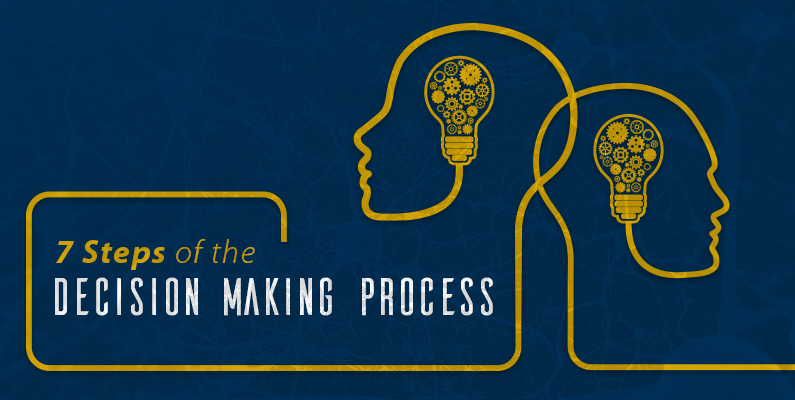Decision-Making Process

The decision-making process is a systematic approach to making choices or solving problems. While various models exist, most decision-making processes share common stages.
Here is a general overview of the decision-making process:
-
Identify the Decision:
- Clearly define the decision that needs to be made. This involves understanding the problem or opportunity that requires a decision.
-
Define the Criteria:
- Identify the factors or criteria that are relevant to the decision. These criteria will be used to evaluate the available options.
-
Gather Information:
- Collect relevant information and data that will help in understanding the situation and the potential consequences of different choices.
-
Identify Alternatives:
- Generate a list of possible solutions or alternatives that could address the problem or capitalize on the opportunity. Creativity and brainstorming can be valuable in this stage.
-
Evaluate Alternatives:
- Assess each alternative against the defined criteria. Consider the advantages, disadvantages, risks, and potential outcomes associated with each option.
-
Make a Decision:
- Choose the best alternative based on the evaluation. The decision-maker should take into account the information gathered, personal values, and organizational goals.
-
Implement the Decision:
- Put the decision into action. This may involve developing an action plan, allocating resources, and communicating the decision to relevant stakeholders.
-
Monitor and Evaluate:
- After implementation, assess the outcomes of the decision. Monitor whether it is achieving the desired results and evaluate any unexpected consequences.
-
Learn and Adjust:
- Reflect on the decision-making process and its outcomes. Identify lessons learned and use them to improve future decision-making. If necessary, adjust the decision or the decision-making process for similar situations in the future.
- It's important to note that decision-making is not always a linear process, and feedback loops may occur. Additionally, some decisions may require a rapid response, while others benefit from a more deliberate and thorough process.
- Different decision-making models may emphasize certain stages or steps, and some may include additional elements such as risk analysis, ethical considerations, or stakeholder involvement. Models like the rational decision-making model, the bounded rationality model, and the intuitive decision-making model offer distinct perspectives on how decisions are made.
Ultimately, the decision-making process can be influenced by individual cognitive factors, organizational culture, time constraints, and the nature of the decision itself.
Thank you.
